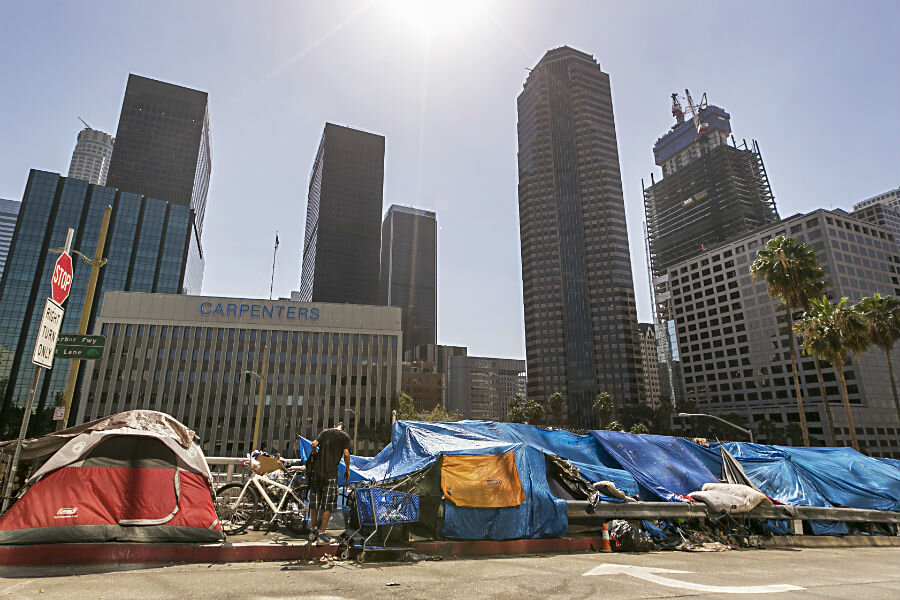Why L.A. wants to spend $100 million on the homeless
Loading...
Over the past two years, homelessness in Los Angeles has increased by more than 10 percent and city officials have announced a $100 million plan to help inhabitants.
According to the Los Angeles Almanac, “an estimated 254,000 men, women and children experience homelessness in Los Angeles County during some part of the year and approximately 82,000 people are homeless on any given night.”
Thousands of these people live out of tents, makeshift cardboard shelters or just on the street itself on the city’s notorious Skid Row.
On Tuesday, Los Angeles mayor Eric Garcetti announced that city officials are planning to declare a state of emergency on homelessness and spend $100 million to eradicate it, reported the Associated Press. But the emergency declaration and the funding will require action by the full City Council.
"These are our fellow Angelinos," Mr. Garcetti said. "They are those who have no other place to go, and they are literally here where we work, a symbol of our city's intense crisis."
The council members hope to have a strategic plan drafted by December so that the first rollout of funds can happen in January. These funds will likely go towards permanent housing and shelter.
To address immediate needs, Garcetti announced a “critical short-term strategy to secure an additional $13 million in emergency funding to expand homeless services and housing,” the majority of which will specifically assist “veterans and non-chronically homeless people in the form of housing subsidies,” according to a press release from the mayor’s office.
The city’s gentrification, rising rent and home prices and the long recession have all contributed to the rise in homeless say experts. Aging hotels and abandoned buildings on Skid Row have been converted into expensive lofts and upscale restaurants, pushing the homeless to spread out all across the city, even into wealthy areas such as Brentwood and the San Fernando Valley as shown by a map the Los Angeles Times compiled in June.
But even $100 million may not be enough, say some. “A hundred million dollars won't even buy all the homeless pillows," Alice Callaghan, long-time advocate for the homeless on Skid Row, said. "A hundred million certainly won't build much housing – and what we really have here is a housing crisis."
And city officials may have an ulterior motive, to “reduce the visibility” of the homeless in preparation for a potential Olympic hosting in 2024 suggests Ms. Callaghan.
"They can spend billions on getting the Olympics," she said of the proposal that anticipates spending $6 billion in public and private financing to bring the Games to LA. "But not on getting people off the sidewalks."
However, a report done earlier this year by the city's top budget official found Los Angeles already spends $100 million a year to deal with homelessness – much of it on arrests and other police services. If the mayor’s additional stimulus can be used to build housing, several homeless could find themselves in a more stable living environment next year.








